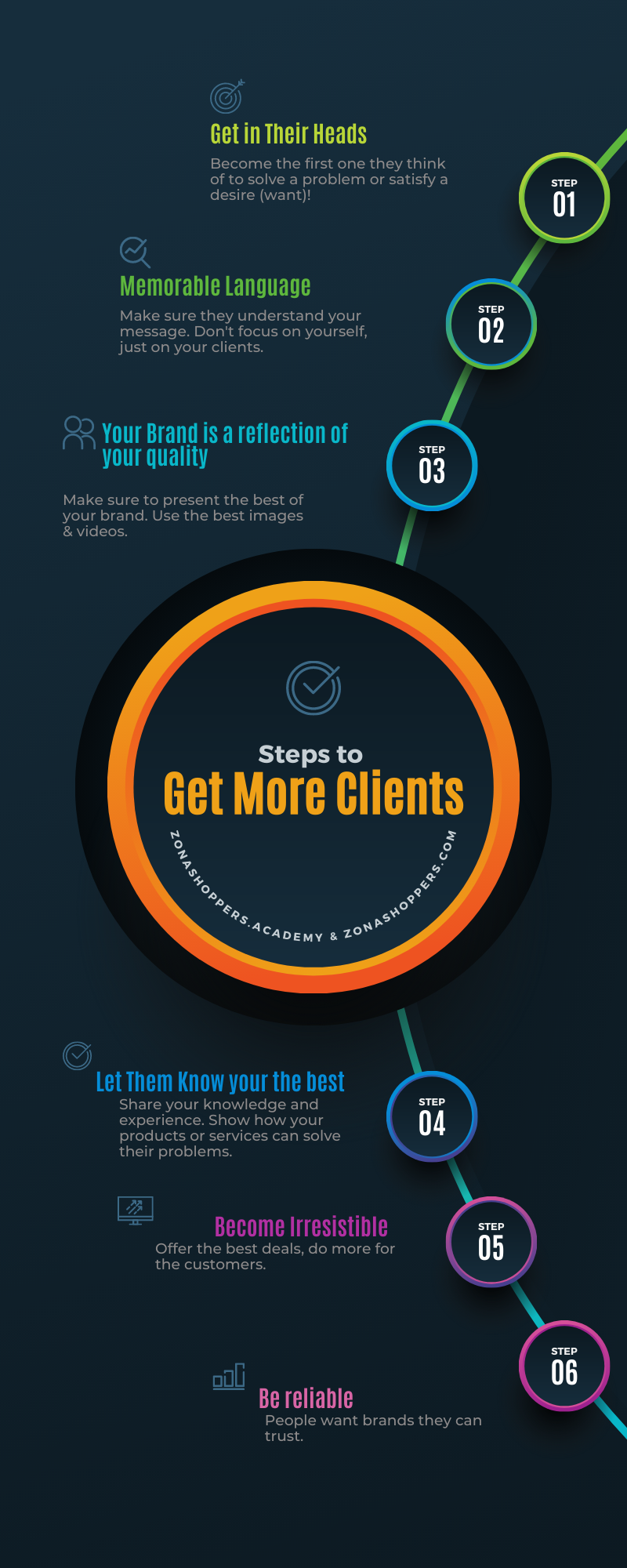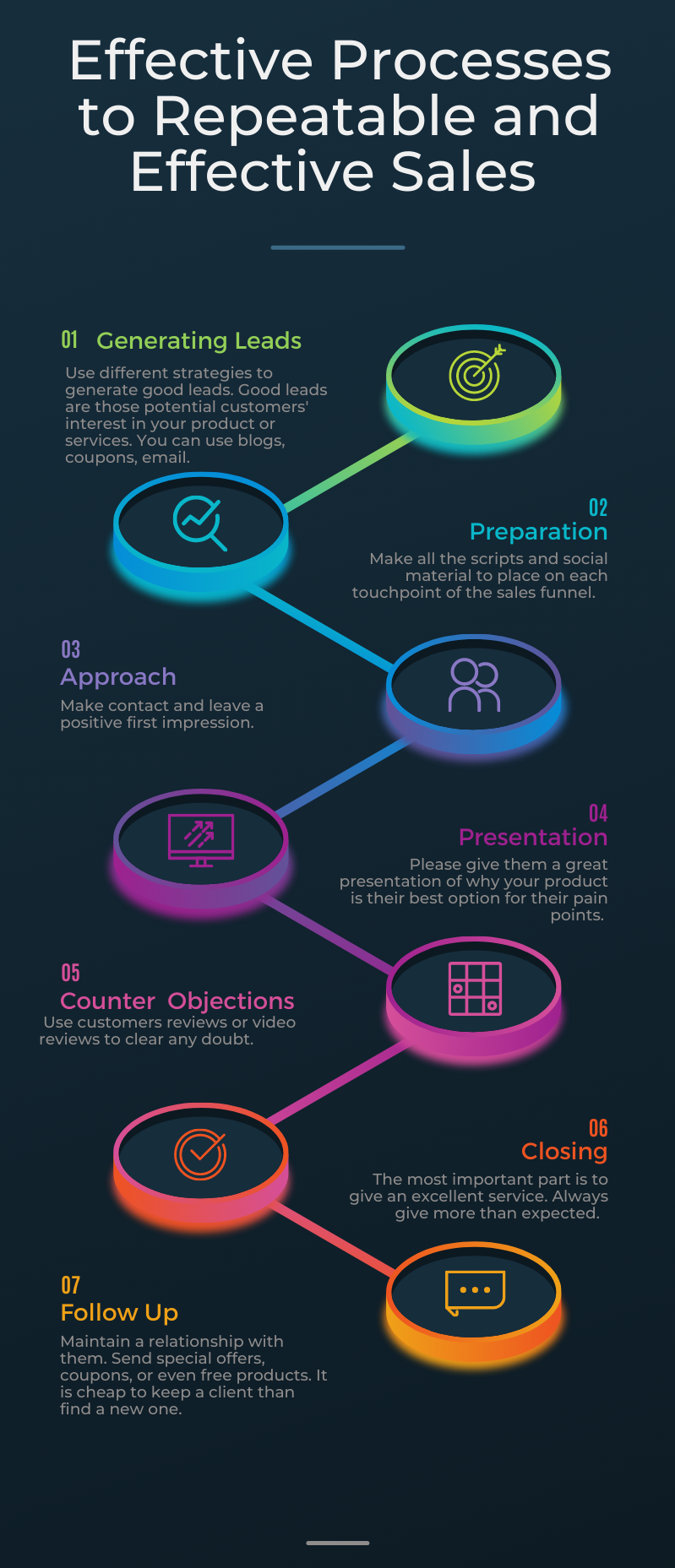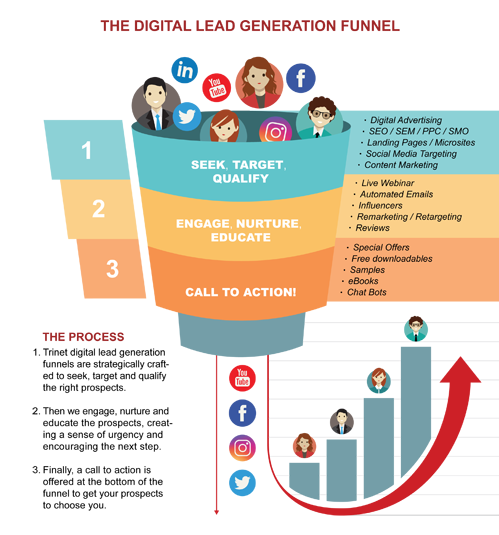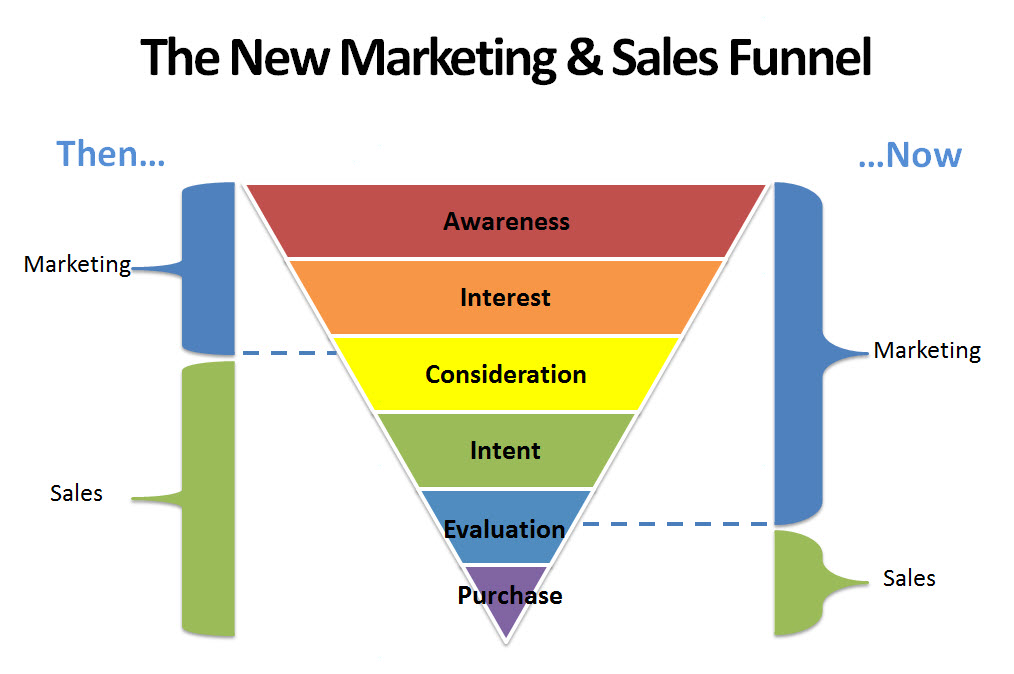How to overcome Sales Problems: Guide for Startups
Many individuals lack experience or knowledge in various aspects of running a business. While some may have business expertise, they struggle with addressing low sales. It’s important to recognize that the sales department holds immense significance. If a business experiences substantial losses or struggles to sell its products/services, its sustainability is at stake.
This guide aims to present potential solutions to common sales challenges. Small business owners often fixate on the problem itself rather than seeking out viable solutions. They perceive the problem as a deep pit that their company cannot escape from. However, in most cases, these are everyday issues that, with minor adjustments, can actually lead to business improvements.

What are the Most Common Problems, and How to Deal with Them?
1. You are new, and you don’t know how to reach your customers
Part A: Define your buyer
As a new business, one of the challenges you may encounter is reaching your target customers. However, the solution to this problem is simpler than you might think. It all starts with understanding the concept of an ideal client and why they are the best fit for your business. By defining your ideal client, also known as a buyer persona or ideal customer, you will be able to identify your niche market. Without a clear understanding of your customer and how your product or service can address their needs or desires, creating an effective sales strategy becomes difficult.
The key idea behind developing an ideal client is to carve out a niche for your business. You shouldn’t attempt to create a sales strategy that appeals to everyone. Instead, you should focus on a specific population niche, a small sector of the market. This niche is determined by the characteristics and preferences of your identified ideal client. If you aim to grow your business, it’s essential to make progress gradually by defining and targeting one niche at a time. This approach allows you to tailor your sales strategy effectively and gain a foothold in the market.
.
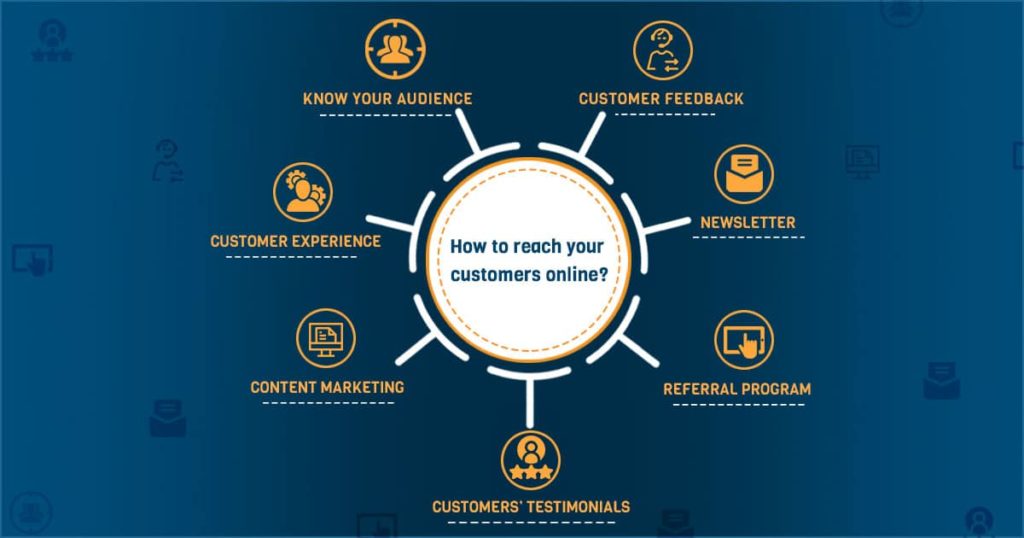
Part B: Prepare to Resolve not to Sell
You are in a time where the differences between generations are becoming more marked. Therefore, the strategies you use for Millennials are not the same as those for Generation X or others. Eventually, customers will know all the product’s features, but at first, that should not be your proposal to win them over.
Always answer these questions:
-
- What’s in it for them?
- What value do they gain when they buy your product or service?
- How do you resolve their discomfort?
Customers buy the benefits, not the product; therefore, the main thing must be to present your product’s benefits to them. Put yourself in the shoes of your ideal client and start thinking about why you (the consumer) will buy it. What message will call your attention and why?
However, another alternative will be to use the power of suggestion and good marketing to create a solution to a problem the customer didn’t know they had.
Examples to offer solutions:
-
Create a connection
Before you start selling any product or service, create a connection with your ideal customer. It is essential to build a relationship of trust between the two of you. Show them that you will be present at all steps.
-
Answers in real-time
One of the easiest ways to build trust is through communication. If a person contacts you, respond to them. Nothing is more disappointing than not receiving a response. Therefore, maintaining a constant and open communication process is a must.
-
Learn from your audience.
In today’s world, the differences between generations are becoming more pronounced. As a result, the strategies you use to target Millennials will differ from those for Generation X or other demographic groups. While customers will eventually become familiar with your product’s features, that shouldn’t be your primary focus when trying to win them over.
Always consider the following questions:
- What’s in it for them?
- What value do they gain from purchasing your product or service?
- How does your offering resolve their pain points?
Customers buy based on the benefits they perceive, not just the product itself. Therefore, it is crucial to emphasize and present the benefits of your product or service. Put yourself in the shoes of your ideal customer and think about why you, as a consumer, would buy it. What message would capture your attention and why?
Alternatively, you can utilize the power of suggestion and effective marketing to create a solution to a problem the customer may not have been aware of.
Examples of offering solutions include:
- Create a connection:
Before attempting to sell any product or service, establish a connection with your ideal customer. Building a relationship of trust is vital. Show them that you will be present throughout the entire customer journey, providing support and assistance at every step.
- Real-time responses:
One of the easiest ways to build trust is through effective communication. When a person reaches out to you, make it a priority to respond promptly. Nothing is more disappointing than not receiving a response. Therefore, maintaining open and timely communication is essential.
- Learn from your audience:
Transparency is key; hiding behind a curtain is not honest. Social media is a platform where people express their true feelings about what they perceive as wrong. Instead of seeing this as an attack on your product or service, embrace constructive criticism, and strive to improve. Address false statements with factual information that empowers your brand. Avoid engaging in arguments, as competitors may use deceptive tactics to undermine your reputation.
- Provide an unmatched experience:
Deliver a unique experience to your customers from the very beginning. Seize every opportunity to make them feel exceptional and appreciated. Collaborate with customers to find ways to enhance your services. Customers value businesses that provide outstanding experiences, and they are more likely to become loyal advocates for your brand.
By focusing on resolving customer needs rather than simply selling, you can create a deeper connection with your ideal customers and differentiate your business in a competitive market.
2. Building Your Client Portfolio from Scratch
Of course, you won’t have clients; you just started. But don’t let that intimidate you. All, absolutely all companies started in the same position you are in now. No customers! That does not mean you will never find clients; on the contrary, it means you can choose the type of client that best suits you. Therefore, define whom you are going to sell to.
Here are some solutions that will help you grow your client portfolio.
Have an online presence.
Today it is impossible to grow a business without using social networks. However, before starting any sales or marketing, make sure your website looks professional. Customers need to know more about who you are, so provide them with a means to do so.
Take advantage of social networks.
It is essential to have a presence in all social networks where your ideal client is. If you are not connected to social networks to boost your connection with customers, you are wasting a golden opportunity. Join communities that are relevant to your customer, product, or business. For example, if you sell items for newborns, start a group for new moms, and share tips, this will help you have a voice within that community.
Use other media as inbound marketing.
It is also known as pull marketing. The primary purpose is so you can drive prospects to your page. The best way to do this is by making great content, using keywords, and search engine optimization (SEO).
Among the best examples of content are blogs or videos on YouTube. These are easy to use and inexpensive.
Demonstrate value
Demonstrate the value your product or service will bring to potential customers. Show how this product meets your needs and better demonstrate solutions by anticipating needs.
Professionally speaking you should:
- Define your target audience:
Clearly define the specific group of people or businesses that you want to sell to. Determine their demographics, interests, and pain points. This will allow you to tailor your marketing and sales efforts to attract the right customers.
- Create a compelling value proposition:
Develop a unique value proposition highlighting your product or service’s benefits and solutions. Clearly communicate the value you offer to your target audience. This will make your business stand out and attract potential clients who resonate with your proposition.
- Leverage your network:
Tap into your existing network of contacts, friends, and family. Let them know about your business and ask for referrals. Word-of-mouth recommendations from trusted individuals can be a powerful way to gain new clients.
- Utilize digital marketing:
Take advantage of digital marketing channels to reach a wider audience. Establish a strong online presence through a well-designed website, engaging content, and active social media profiles. Implement targeted advertising campaigns to attract potential customers who fit your ideal client profile.
- Offer incentives or promotions:
Consider offering incentives or promotions for their first purchase to attract new clients. This could include discounts, free trials, or exclusive offers. These incentives can create a sense of urgency and encourage potential clients to try your product or service.
- Attend industry events and network:
Participate in relevant industry events, conferences, or trade shows to network with potential clients. Be prepared to share information about your business and engage in meaningful conversations. Building relationships face-to-face can be highly effective in acquiring new clients.
3. Creating an Effective Sales Process
Lack of consistency in your sales processes can result in failure. It’s essential to establish a consistent and streamlined sales process instead of adjusting it for each client. Consistency ensures high-quality service and equal treatment for all customers. Changing your marketing messaging can also negatively impact sales. Instead, focus on developing strategies tailored to each stage of the sales and re-sale approach.
Here are steps to create an effective sales process:
-
Define the stages of your sales: Identify the key stages a customer goes through, from initial contact to closing the sale and beyond. Clearly define the actions and milestones associated with each stage.
-
Determine specific activities and metrics: Within each stage, outline the specific activities sales representatives should perform. Set measurable metrics to track progress and success, such as the number of calls made, meetings scheduled, or conversion rates.
-
Train and empower your sales team: Provide comprehensive training to your sales team on the defined sales process. Equip them with the necessary tools, resources, and product knowledge to effectively engage with potential customers and guide them through the sales journey.
-
Implement effective sales tools and technology: Leverage sales tools and technology to streamline and automate various aspects of the sales process. This can include CRM (Customer Relationship Management) systems, lead management software, or sales analytics tools. Choose solutions that align with your specific business needs.
-
Continuously monitor and improve: Regularly evaluate the effectiveness of your sales process and track key performance indicators. Identify areas for improvement and make necessary adjustments to enhance efficiency, conversion rates, and customer satisfaction.
Prospecting your Customers
Prospecting is finding and qualifying potential customers. When you find a potential customer, you need to determine if their need or want is something you can satisfy with your products or services. Remember, a potential customer is a person who is more likely to buy from you. But to find good potential customers, you need good leads.
Follow-up
Follow-up is used to build a long-term relationship with your customer for purposes of repeat sales. For example, for e-commerce services, verifying the product conditions after shipping and following up on how the service was.
Preparation
The process starts by studying and gathering relevant information, including product descriptions, prices, and competitor information. Then, prepare to make your initial sale presentation.
Approach
The approach is the unaffected contact you have with the potential customer. For example, you are using questions in social media to cause people’s interaction. You can also use the product approach in which you give a sample of your product to potential clients. It can also be face-to-face interaction with your potential clients.
Presentation
Presentation is actively listening to the needs and wants of the potential customer and demonstrating how your product can meet those needs and wants. In other words, you present the solution through your product or service.
Handling Objections
Handling objections are an essential part of the process. It is helpful because it guides you in addressing prospects’ concerns. You can overcome objections through the preparation phase.
Closing
Closing includes all the signals that show the prospect is ready to decide. Here you can have two different approaches; the first is the choice closing. It is where you offer an additional alternative. For example, cash or credit? The other approach is the extra inducement closing where you offer something extra, for example, a discount, a free or extra product. The third approach is the standing room only closing, where time is of the essence in terms of the offer, such as a particular discount or lack of more inventory.
4. Developing an Effective Lead Generation Method
Having a successful lead generation method is crucial for achieving desired sales outcomes. Generating efficient leads that align with your business goals requires a well-defined process. It’s important to recognize that lead generation takes time and investment, and therefore, it’s essential to develop a suitable method to maximize results.
Here are steps to develop an effective lead generation method:
-
Identify your target audience: Clearly define your target audience based on demographics, interests, and behaviors. Understanding your ideal customers will help you tailor your lead-generation efforts to reach the right prospects.
-
Create compelling and valuable content: Develop high-quality content that provides value to your target audience. This could include informative blog posts, e-books, case studies, or webinars. Offer solutions to their pain points and position your business as an industry expert.
-
Implement lead capture mechanisms: Integrate lead capture mechanisms on your website and landing pages. Offer valuable resources in exchange for contact information, such as email addresses. This allows you to nurture leads and guide them through the sales funnel.
-
Utilize social media platforms: Leverage social media platforms to expand your reach and engage with potential leads. Share your content, participate in relevant industry discussions, and use targeted advertising to reach your desired audience.
-
Optimize your website for lead generation: Ensure your website is optimized for lead generation. Use clear call-to-action buttons, compelling landing pages, and intuitive forms. Make it easy for visitors to express interest and provide their contact details.
-
Nurture leads through email marketing: Implement an email marketing strategy to nurture leads and build relationships. Send personalized and targeted emails to provide valuable information, share updates, and promote your products or services.
-
Continuously measure and optimize: Regularly track and analyze the performance of your lead generation efforts. Monitor key metrics such as conversion rates, lead quality, and cost per lead. Use these insights to optimize your approach and refine your methods.
5. Aligning Marketing and Sales Plans for Success
Aligning the marketing plan with the sales plan is essential for achieving optimal results. While it may be commonly perceived that these two functions operate separately, it is highly recommended to bring them together. The purpose of developing marketing strategies is to attract potential customers who can ultimately make purchases.
Both the marketing and sales teams must work in synergy. The marketing team focuses on creating compelling content and identifying the most effective channels to generate leads and attract the target audience. Simultaneously, the sales team plays a vital role by providing crucial information about the product or service to support marketing efforts.
Key aspects of aligning marketing and sales plans:
-
Collaborative goal-setting: Marketing and sales teams should collaborate to define common goals and objectives that align with overall business objectives. This ensures both teams work towards a shared vision and understand how their efforts contribute to the sales pipeline.
-
Continuous communication and feedback: Regular communication and feedback between marketing and sales teams are crucial. Sales representatives can provide valuable insights about customer needs, preferences, and objections, enabling the marketing team to tailor their strategies accordingly. Likewise, marketing can share valuable data and lead information to help sales reps personalize their approach.
-
Shared buyer personas and messaging: Develop buyer personas collaboratively to ensure a unified understanding of the target audience. Align messaging and content creation to address potential customer’s pain points and interests. This consistency in messaging helps create a seamless customer experience throughout the marketing and sales journey.
-
Integrated lead management: Establish a streamlined process that enables smooth marketing and sales handoff. Implement tools or a CRM system that allows both teams to access and track lead information, ensuring no leads fall through the cracks and a seamless transition from marketing-generated leads to the sales process.
-
Ongoing alignment and analysis: Regularly review and analyze marketing and sales data together to measure the effectiveness of campaigns and strategies. Identify areas of improvement, adjust tactics, and optimize resources to maximize conversions and revenue generation.
Conclusion
to navigate challenges and drive growth in the face of inflation, small businesses should focus on cost optimization and efficiency, strategic pricing, diversification and market expansion. By implementing these strategies, businesses can mitigate the impact of price fluctuations, maintain profitability, and sustain their competitive edge. Additionally, it is crucial to prioritize customer satisfaction, adapt to changing market dynamics, and leverage digital tools and technologies to enhance operations. With careful planning, adaptability, and a customer-centric approach, small businesses can overcome the challenges of price and inflation and thrive in a dynamic economic landscape.

